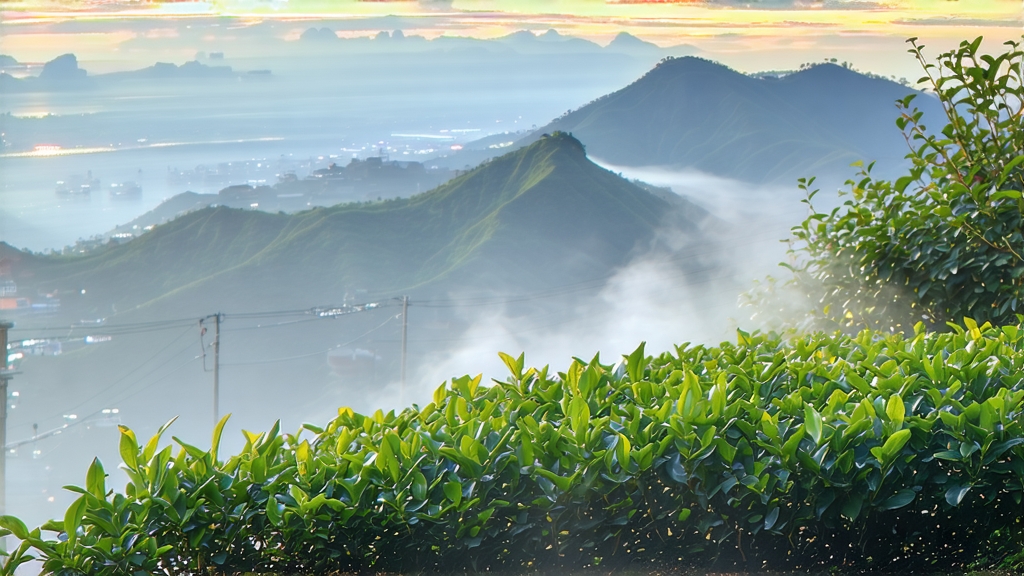
Tucked away in the cloud-veiled peaks of Sichuan’s Mengding Mountain lies the birthplace of the world’s oldest recorded tea garden and the most aristocratic member of China’s elusive yellow tea family—Mengding Huangya. While green tea commands global fame and pu-erh enjoys a cult following, yellow tea remains a quiet legend, produced in tiny lots for emperors, poets, and, today, a handful of devoted connoisseurs. Mengding Huangya, literally “Yellow Bud from Mengding,” is the variety that best embodies the mystique of this almost-lost category: a liquor the color of late-afternoon sunlight, a fragrance that drifts between fresh corn silk and distant orchards, and a texture so smooth it feels like sipping warm silk.
History: From Han Dynasty Altar to Tang Dynasty Tribute
Historical gazetteers credit the Daoist monk Wu Lizhen with planting the first seven tea bushes on Mengding in 53 BCE, making the mountain China’s earliest documented cultivated tea garden. By the Tang dynasty (618-907), the tender buds were already freighted down the Min River to Chang’an, wrapped in bamboo leaves and yellow silk, to grace the imperial table. The Song emperor Huizong—himself a skilled tea artist—declared Mengding Huangya one of the four “Almighty Teas” capable of “lifting the veil between earth and heaven.” Annual tribute quotas were set at 365 buds, one for each day of the year, picked only between the Qingming and Grain Rain solar terms when the morning dew still carried winter’s chill.
The tea vanished from court records after the 17th-century transition from Ming to Qing, when green tea’s simpler processing won commercial favor. It re-emerged in 1959 when Sichuan tea researchers reconstructed the technique from fragmentary Ming manuscripts, presenting 500 grams to Chairman Mao as National Day gift. Today fewer than 2,000 kg of authentic Mengding Huangya are made each spring, most pre-sold to private collectors in Beijing, Shanghai, and Tokyo.
Micro-terroir: Why the Mountain Makes the Bud
Mengding sits at 29.8° N, the same latitude as Darjeeling but at a lower elevation (1,000–1,450 m). The Sichuan basin traps humidity, feeding perennial mist that filters UV light and forces the tea plant to synthesize more theanine and aromatic volatiles. Soils are yellow-brown laterite rich in selenium and zinc, drained by countless rivulets of snowmelt. The indigenous cultivar, known locally as “small-leaf yellow stalk,” keeps amino acids high even as spring days warm quickly, giving the buds their signature sweet-savory balance.
Craft: The Art of “Sealed Yellowing”
Yellow tea’s defining step is men huang—“sealed yellowing”—a slow oxidation that occurs neither like green tea’s quick kill-green nor oolong’s vigorous bruising. After plucking one bud and the unopened first leaf (standard 2.0–2.5 cm length), the leaves are gently withered on bamboo trays for four hours until they lose 15 % moisture. They are then pan-fired at 180 °C for three minutes, just enough to deactivate polyphenol oxidase at the surface while preserving inner enzymes.
The still-warm leaves are wrapped in thick cotton cloth and placed in a humid “yellowing room” kept at 28 °C and 75 % RH. Every 40 minutes the master opens the bundles, fluffs the leaves, and re-wraps them tighter. Over 48–72 hours the chlorophyll slowly degrades, catechins polymerize, and a faint golden down appears on the bud—hence the name “yellow bud.” Finally the leaves are given a low-temperature bake at 60 °C for two hours to fix the color and aroma. The entire cycle demands constant sensory vigilance: too little humidity and the tea stays green; too much and it becomes sour.
Grades & Styles
- Imperial Tip (皇尖): 100 % single buds, needle-shaped, downy, producing a luminous topaz liquor with notes of lychee and steamed squash.
- Fine Bud (貢芽): One bud and one initial leaf, crescent shaped, balanced between sweetness and briskness.
- Special Leaf (特級): One bud and two leaves, slightly more robust, favored by Sichuan teahouses for multiple infusions.
Brewing: A Ritual of Gentle Heat
Water